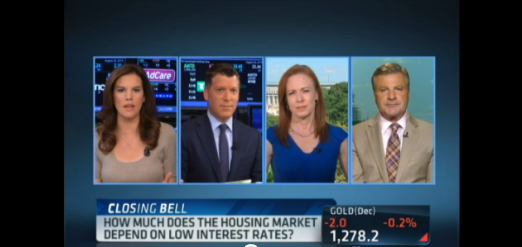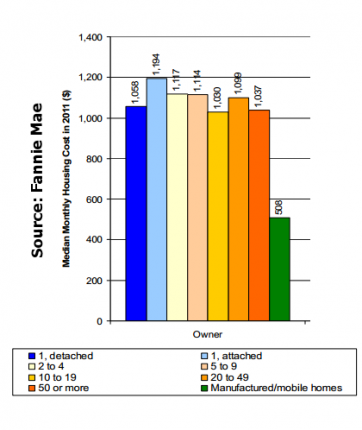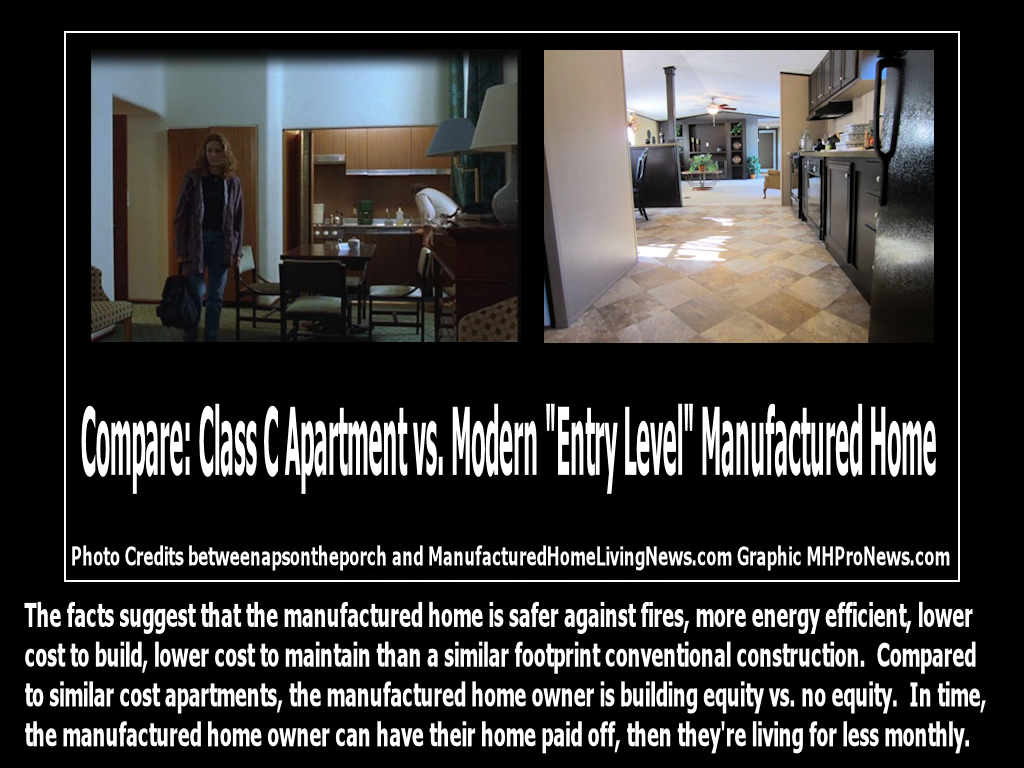CNBC’s Diana Olick was part of an interesting discussion on the relationship of housing pricing, interest rates, access to credit and how they intersect in home buying affordability.
“There has long been a saying in the real estate market,” Okick says, “that potential homebuyers don’t buy according to the home price or the mortgage rate. Instead, “they buy the monthly payment.” The monthly payment is, of course, a combination of rate and price, but the weight of each can change dramatically.”
“It never ceases to amaze me how hung up mortgage borrowers can be on rate,” Olick quotes Matthew Graham of Mortgage News Daily. “In fact, a lot of times we have to remind them that the .125 percent difference in rate only amounts to X dollars and they’re surprised.”
Still credit, CNBC
Tim Rood with the Collingwood Group pointed out in the video discussion posted below that millions who ought to be home buyers are renting. This may be so, even when there may be a 30% savings in the payment for owning a house vs. renting a similar space.
Olick pointed out that for many, the question isn’t so much interest rates – which certainly are a factor – but rather the monthly payment and access to financing that works for buyers.
This discussion is huge in the manufactured home (MH) industry and has been for years. MH retailers, developers and land-lease community operators know from experience that it is ‘the down payment and the monthly payment’ that drives so many shoppers.
Modern, “residential style” manufactured home with high ceilings,
finished tape and textured walls, crown molding,
transom windows and more, produced by an Energy Star rated builder.
Even when interest rates look high, some balk, and yet housing affordability may still be superior with a manufactured home than apartment rental or other conventional housing options, such as a townhouse, condo, duplex or single family house.
The chart below from Fannie Mae demonstrates that manufactured homes are the lowest cost housing option, even when a higher interest rate is in place. A recently released GAO report demonstrated the same point.
Some consumer advocacy groups (such as the example linked here) that could be described as ‘rate fixated’ may not realize that while everyone wants a “good rate,” the real bottom line are factors such as down payment, monthly payment and quality of living.
Studies such as the recent IBHS wind test demonstrate
that even an entry level manufactured home that is properly installed
can be more durable in hurricane force winds than a far more costly conventionally built house.
As more manufactured home owners, potential buyers, media, housing industry professionals, non-profit groups and public officials come to an every better understanding of the many positive realities about modern manufactured housing, the opportunities to improve millions of people’s lives and ease strained housing subsidy budgets could be accomplished. ##
 manufacturedhomelivingnews.com Manufactured Home Living News
manufacturedhomelivingnews.com Manufactured Home Living News



































